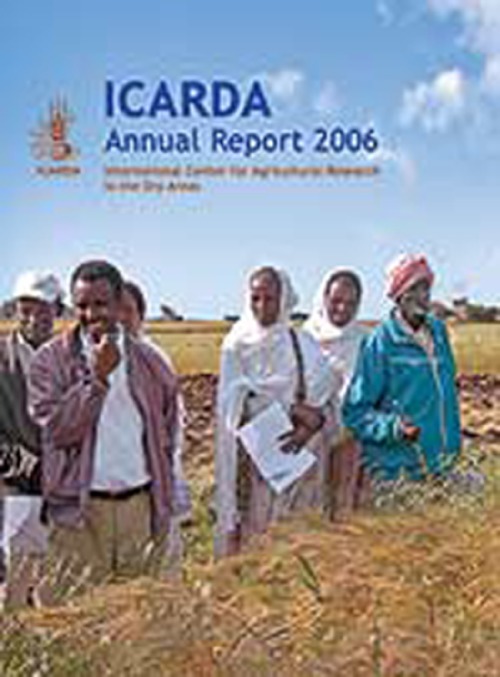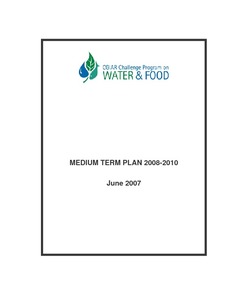Doorbraken in het Rivierengebied : De levensloop van transformerende concepten en hun netwerken in het centrale rivierengebied 1970-2005
Onderzocht is de ontwikkeling en doorwerking van transformerende concepten in professionele netwerken gericht op duurzame gebiedsontwikkeling. Casus is het centrale rivierengebied in de periode 1970-2005. Interactie tussen professionele domeinen brengt nieuwe concepten voort. De werking van een concept verandert in de tijd, net als de netwerken die zich rond concepten vormen. Inzicht in de levensloop van concepten en hun netwerken leidt tot aanbevelingen omtrent het creëren van gunstige condities voor het bevorderen van transities naar een duurzame leefomgeving. Behandeld worden o.a.
ICARDA Annual Report 2006
ICARDA witnessed several important developments in 2006. Of these, the Fifth External Program and Management Review (EPMR) was the most significant, as it provided a comprehensive assessment of the Center's global activities, as well as new insights and dimensions that helped refine ICARDA's new Strategic Plan for 2007- 2016. The EPMR coincided with a transition in the governance and leadership of ICARDA.
Remediation of Arsenic for Agriculture Sustainability; Food Security and Health in Bangladesh
This working paper reports the first successfully implemented field pilot study in the management strategy of arsenic in crop production and for sustainable environment.
Proceedings of the international forum on water resources management and irrigation modernization in Shanxi Province, China
Water is essential for life and plays a key role in achieving the Millennium Development Goals. As the population continues to grow and the economy develops, competition for water uses between different users has intensified and induced excessive strain on the environment. Climate change and water pollution further aggravate the situation. Today, 2.8 billion people are affected by some form of water scarcity, and the number of regions affected by water shortages is on the rise.
Guidelines and computer programs for the planning and design of land drainage systems
Drainage of agricultural land is one of the most critical water management tools for the sustainability of productive cropping systems, as frequently this sustainability is extremely dependent on the control of waterlogging and soil salinization in the rootzone of most crops. On some agricultural lands, the natural drainage is sufficient to maintain high productivity. However, many others require improvements in surface and subsurface drainage in order to optimize land productivity, while maintaining the quality of soil resources.
Modernizing irrigation management - the MASSCOTE approach
The performance of many canal irrigation delivery systems is unsatisfactory in terms of: (i) water resources management; (ii) service to irrigated agriculture; and (iii) costeffectiveness of infrastructure management. In recent years, participatory approaches and management transfer reforms have been promoted as part of the solution for more cost-effective and sustainable irrigation services. Large agency-managed systems have been turned over partially or completely to various types of management bodies. However, the results have usually been disappointing.
Modernization Strategy for Irrigation Management: Karnataka - India Hemavathi Project - CNNL
This paper is based on the outcomes of a training workshop on modernization of irrigation management organized in 2007 for 40 participants with a focus on the Hemavathi project.
The future of large rice-based irrigation systems in Southeast Asia
Most of the large rice irrigation systems in Southeast Asia have been designed for rice irrigation under a supply-driven mode. Despite their huge contribution to agricultural production, there is a general consensus that these large rice irrigation systems have not lived up to expectations because of a legacy of poor institutional arrangements and system design, degraded infrastructure, poor management and stagnation in the face of rapid transformations of agriculture and pressures on their water supply.





